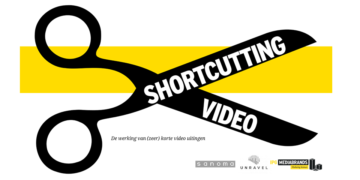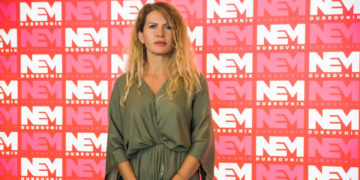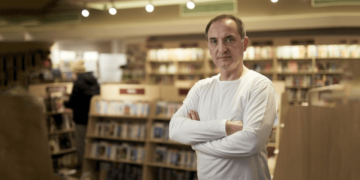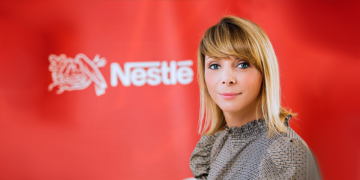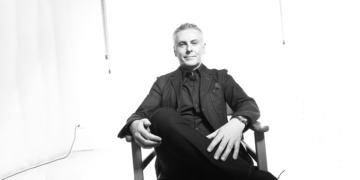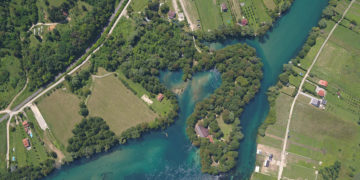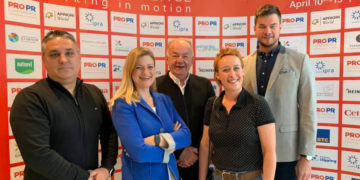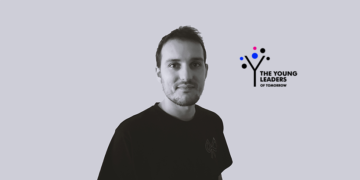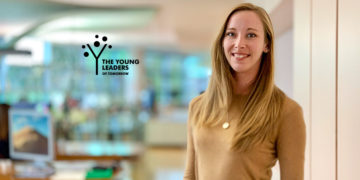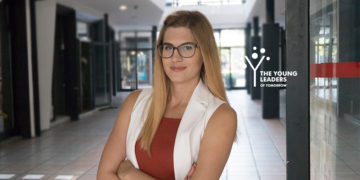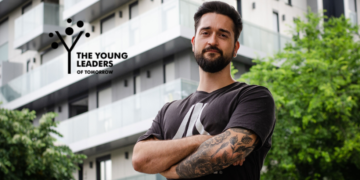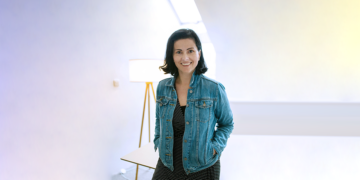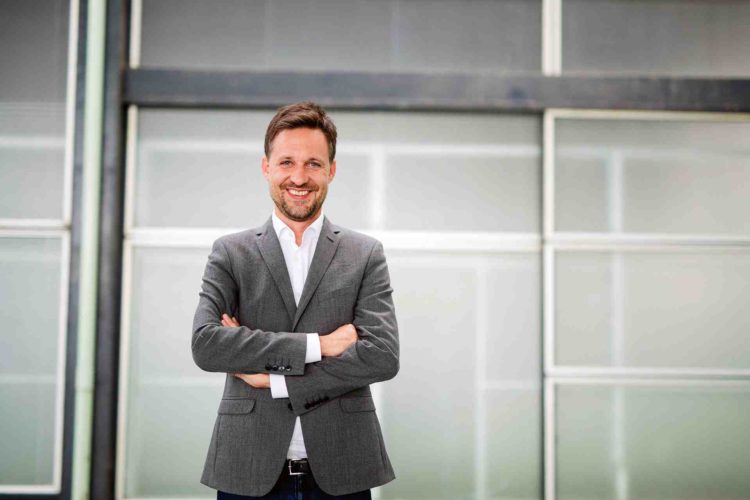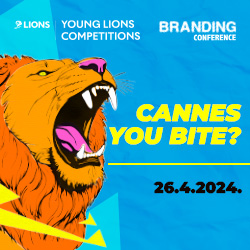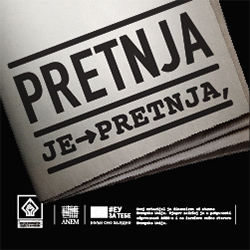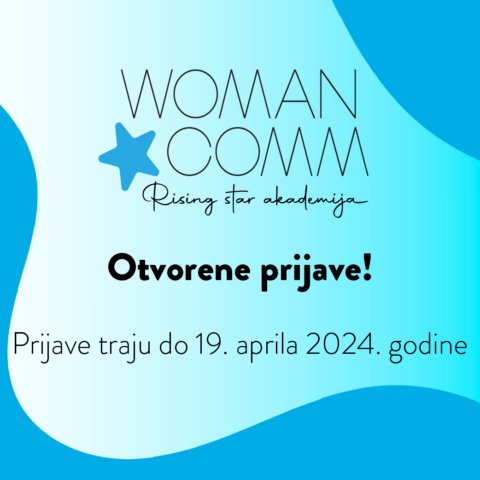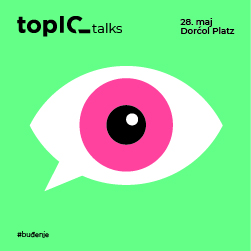Drugi jezik na kojem je dostupan ovaj članak: Bosnian
By: Ekrem Dupanović
I had my first interview with Damjan Geber – CEO of Brigada, an agency that transforms spaces into unique experiences – seven years ago. I recently re-read that interview. Then I listened to the recording of the conversation we recently had in Zagreb. What matters most has remained the same. The passion with which Damjan and his team approach their work, the professionalism and the love for what they do.
Between these two interviews, our portal wrote about Brigada and its successes several times. The last two projects, which we wrote a lot about, were the exhibition The Tunnel (Croatia je Hrvatska) and the design of offices of Addiko Bank. We wrote much more about the exhibition – every time it won one of the great national and international prizes, and there were a lot of them. The last major award this year came a few days ago. Brigada was the first Croatian interior design representative in the finals of the most prestigious architectural festival, the World Architecture Festival (WAF-INSIDE), which was held in Amsterdam. I’m glad that Media Marketing was the first to proclaim the exhibition Croatia je Hrvatska – we write our own history the Event of the Year in the Adriatic region. Since then, awards just started piling up.

With its length, this interview goes beyond our usual frameworks, but stick with us till the end. The story is very interesting, not because of my questions, but because of Damjan’s answers. He is the only man in the region who is competent to speak about space branding and creating a unique experience for all who enter those spaces. If we had time and space, we could have talked three times longer. So huge are his passion, his knowledge and his dedication to this business. And one more thing, this is the only interview so far that I will personally send to everyone I know who need to read it. I even caught myself, in the early morning hours, wondering whether Brigada could create a unique experience for our readers. After all, we are a kind of space to which people come, but I’m not sure we’re providing such experience. Maybe Damjan will be surprised when he reads this, but physical spaces are increasingly moving to the Internet. Or we should simply open a store where we could sell the ideas of the regional creative industry.
Damjan Geber: Before Brigada entered the market, it wasn’t properly regulated. Unfortunately, too many people are still talking about some sale spaces that need to be arranged. They talk about arranging outlets and shops. If you tell someone that you need a rebranding of the company, you’re not saying “design a logo for me”. Rebranding is something that goes much deeper than a logo, a new slogan or a new name. It is a strategy that supports a whole new story, and space is an integral part of that story. This is especially true if this space is the only physical touchpoint you have. For example, this is true for a bank or a telecom. They can have everything on point online, but if you have to experience the brand physically, then it’s the sales point, and if the sales point is not consistent with the whole rebranding story, then your entire brand falls apart. The research we follow show that people today make 76 percent of their purchasing decisions at the point of sale. You can have the best campaign in the world, but three quarters of people will change their decision at the point of sale. This is a terribly important segment of the whole story, something we are trying to explain to the market all the time – that an investment in business space is not an investment in its beauty, but in its compliance with the whole story, its functionality, and, at the end of the day, better business results. I usually say that the successful space that we make is 50% about being beautiful, well-designed, and 50% about giving business results. These results don’t necessarily have to be financial, though it is good if they are. This can be the perception of brand quality. We also had situations where a brand that didn’t have a good quality perception in the market had the goal to change that in the minds of people and build trust in better quality. The space can also be for employees. Perhaps it’s not important to increase sales, but it is essential to encourage loyalty and employee engagement. For many employees, workplace is their second home.
We aren’t a special channel of communication, we are the integral part of the mix of brand image and brand perception
ED: Is Apple globally the best example of that?
Damjan Geber: Apple is definitely one of the best examples. They dictate the market and can be used as prime example in everything. Apple has no apples in their interior – there’s no huge logo on the walls. The whole store is a brand. You shouldn’t put the logo in a space if the space is telling the story. Their retail director said a year ago that Apple is currently their number one product – not the iPhones nor MacBooks, but their stores. They are their first and most important product. They had generally changed the perception of a customer journey with their old concept, and with the new one they completely distanced themselves from that. Apple’s concept no longer has sales as the main parameter, but experience of Apple and a returning community. They can sell their phones and computers online, through other retailers and in many other ways, but the Apple Store today is the platform for promoting young artists, creating a community feeling, creating squares. Apple has built an entire plaza around them in California, giving the community a completely new gathering place. They therefore do what every other brand should do, and they do it perfectly and consistently in every point. And to top it all off it looks great.
ED: What Brigada is doing is needed in both Croatia and in the region, and it all seems logical. But how much logic do clients recognize in all that? How receptive are they, and are things showing progress in these last ten years since you are in this business?
Damjan Geber: I can’t say things haven’t started moving. More and more clients approach us with the right questions, especially in the last year or two. We have less and less requests to have their spaces “arranged”, and more and more the desires to improve some results that are important to them through design of sales space. But again, I don’t expect clients to know everything about space. There are very few companies in our world who have someone who deals with the retail concept. It’s always stuck somewhere in between marketing, sales, investments, procurement… it’s always hanging somewhere in limbo. People who talk to us are mostly those who have degrees in economics, and I don’t expect them to know everything about this. I don’t expect them to come to us with such knowledge because we are the ones who have that knowledge. But the very fact that they approach you and ask for a concept of a sales soace that will be better at sales, and will be in line with the brand, not with an idea – “we need a nicer space” – is a big step forward. Then it becomes very important whether my journey through that space is intuitive or not. All the other channels are in vain if that touchpoint remains “old” and complicated, and in which I, as a client or a buyer, feel disappointed. We are not a special channel of communication, we are an integral part of this mix of brand image and brand perception. That’s why I’m glad we have this relationship with the Bruketa&Žinić&Grey marketing agency. My goal is to finally try to explain to the market that this is a holistic approach. This means that we are all part of the same story which has different manifestations, and not vice versa, where you have many stories and trying to fit them all into one. That’s the old approach. Today, as a person who is connected 24/7, you no longer have that distinction between physical, digital, online, BTL, ATL – it’s all the same story and that’s why it’s important for us that, through this collaboration and cooperation with other agencies in the market, we have realized a number of successful projects with an integrated story.
ED: This is what probably enabled you to create a fantastic exhibition for the Tobacco Factory Rovinj, about the culture of smoking, despite the fact that promoting smoking is prohibited.
Damjan Geber: Yes, that was held in Gliptoteka, but that wasn’t a promotion of smoking. It was an integral story. We can tell that story through the classic media, and we can tell it through experience. There’s no word for that in Croatian language. In the US, there is a widely used term for it – experiential design. It is what a space provides you. It must provide an experience in line with all other experiences. And it is no less valuable – it is equal. And therein lies our constant struggle to explain to people that decorators, architects or interior designers are not our competition. We can set up a strategy that some other interior designer can turn into space. They have to know what messages, and what experience the space needs to convey. Do they know that? Unfortunately, the knowledge that is leaving the universities in Croatia and throughout the Balkans today is architecture, and only architecture. Marketing is marketing, and these two things are completely different.
ED: What would be a good example in your opinion? Something you created, and it turned out well because the client understood what they need?
Damjan Geber: Addiko is a great example.
A number of companies still do arrangement and decoration of spaces. What boggles me, when I put myself in their shoes, is how can they even start to justify such investment when they don’t have a single parameter to follow afterwards
ED: We’ll talk about Addiko more later, but is there something else?
Damjan Geber: There are a lot of them, and I wouldn’t want someone to feel less valuable if I don’t mention them. Let’s say a good example is Offertissima. It is a store of affordable products and is perceived as a place where you can find everything. We did an analysis of their customer experience at the point of sale and found a point where they weren’t doing everything they could inside. Somehow the space was preventing them to move in a way they intuitively would. Very simply, as a result, we said that it is necessary to reduce the number of products, to remove gondolas so that people can experience the space and let the products breathe. When they were given more breathing space, a mystery shopping action after these interventions showed that buyers experienced the space as richer, that there were more products than before, although there was really much less. This is the power of perception.
People’s perception is based on a bunch of parameters that are not concrete. We don’t know why we like or dislike something, why we feel good or bad, why we think there is more or less of something. We feel that. And what we do is managing that feeling and experience of space.
A number of companies still do arrangement and decoration of spaces. What boggles me, when I put myself in their shoes, is how can they even start to justify such investment when they don’t have a single parameter to follow afterwards. Architects and decorators come in only after we say what goal this investment should achieve. After that, we work together on the strategy and the concept, decorators and designers then do their part of the job, and then we come back to see if the goal was achieved, whether the sales are better, whether the time spent in the store is longer or shorter, is the service faster…

ED: We’ve written everything, or almost everything, that could be said about the exhibition Croatia je Hrvatska. It’s a great project which brought you some of the most coveted global awards. What was the greatest challenge of that project?
Damjan Geber: The biggest challenge was that the exhibition was conceptually made so that we write our own history – that visitors actively participate in the building of the exhibition. This exhibition was set as a framework that was supposed to be filled in time, and the audience actively, in real time, contributed to creating content. That, as far as I know, has never been done before.
ED: How did people respond to being a part of the whole story?
Damjan Geber: Initially there was a lot of try and miss, and adaptations, to get through to people and to explain to them how they can participate. We wanted to get their honest reaction, because it needed to be intuitive. This is the advantage and beauty of the digital segment of this exhibition, which was crucial. You can test a whole set of ideas or premises in real time and get results right away. The digital team did the most important part of the job here, because they managed to quickly find the right way to activate a large number of people. We expected of them to remember something, to find it, scan it, accept the terms, and post it on the website. We were therefore expecting significant engagement from people. We started from the assumption that people would simply want to do it. They won’t. We are all very lazy. People need to be given a reason to do something. This reason cannot be forced, it must be intuitive. The moment in which we found the right intuitive reason is when their independent engagement started, without us pushing them to do anything. Then everything exploded.
I’m sorry that the exhibition “Croatia je Hrvatska” hasn’t stayed a permanent fixture, if not in the Tunnel then elsewhere
ED: Yes, but still you had to set up an exhibition that would be interesting to them, and make them want to be a part of it. What was the most interesting about it?
Damjan Geber: In the physical setting itself it was important not to change anything because the space of that tunnel is a protected area. And when we realized that we have a protected tunnel where we need to make something, we asked: how? How to make something in a space where we couldn’t touch even a single screw. But at Brigada we have a phenomenal team of designers and architects who designed a very simple system of a tunnel within the tunnel. It looked very complicated, but essentially it all rested on three unique modules, and when we solved that we could start working. We built the entire system in two weeks because we found a system that could work. The second challenge was the rain, it was necessary to put rain in the tunnel. If there wasn’t for our genial associates, who recognized the quality idea, there wouldn’t have been rain in the tunnel. We found a person wo deals with irrigation, and who knows how to put pipes on the floor irrigate. If he was a standard salesman of tubing, he would have probably said it’s not his job, and that he couldn’t be bothered. But he immediately recognized the challenge in that. He loves his work, and his passion helped us find an entirely new technique together. We had a rain simulation with real sprinklers. Everything seemed realistic and the way it should be, and we didn’t use any complicated technology. And when the rain was done, when we turned it all on, we just said: “Wow, that’s it.” We had a hidden pool as well. The pool constantly circulated water and the rain was constantly falling. Day after day, day after day, and the exhibition began to live. I personally was very pleased that from the get go we set the condition that there would be no censorship. We write our own history, whatever it was. And the history like ours, where you have 130 problematic years, no one has done in our region so far. The question of how the curators will put it all up was a serious one. Would someone characterize it as good or bad? Each of the periods had something controversial. We’ve always said that we are not the ones who will determine that, that the people will tell what history is for them. We refused to publish only one photo, because we were not sure what exactly was on it, and it looked potentially illegal. The greatest beauty was that there was no hate at all. In the time when media tell us that history is full of hatred, people showed history as nice memories, memories of their ancestors and themselves through that history. Potential hatred was the fear that we turned into a great victory.
ED: What would you perhaps do differently in that exhibition? Is there some afterthought?
Damjan Geber: Nothing. It was perfect for me. The only thing I would do differently – and it’s something I could not influence – is the fact that the exhibition had a time limit. It should have remained permanent, if not in the tunnel, then somewhere else. Eventually, it was agreed with Croatia osiguranje that the exhibition would be donated to the city, but there was either no interest, or locations, so the exhibition never made it to become a permanent fixture. I’m very sad about that. A lot of effort was invested, a lot of personal stories went into it, it could have become our permanent heritage. The exhibition was not my, our, or a private story of Croatia osiguranje. We worked on it as if it was a public good. People came to visit three or four times. We had fantastic moments. One of our colleagues put a picture of her dad, who was the champion of Yugoslavia in boxing, and now lives in Sweden. He came to Zagreb for some kind of family event they had. She asked me to put that picture up because her dad was coming and she wanted to bring him to the exhibition. He came, went through the exhibition in detail, looked at each picture because he was personally touched because he no longer lives here. And when he came to his picture, and he had no idea it would be there, he just started crying. The entire family was with him – fifteen people. When he started crying they were moved as well, and he just said: “See, someone still remembers me here. People still value what I’ve done a long time ago.” These personal stories were awesome. I remember an old lady and her daughter who was explaining things in the tunnel section dedicated to World War II, and her grandma just told her she sat right there, in the tunnel, in the shelter, while Zagreb was bombarded. These personal stories eventually took over the entire exhibition. That was our goal, and we were most afraid if it would happen or not.
ED: Exhibition in a way came as a relaxing stint after the adventure of rebranding the Addiko bank.
Damjan Geber: And it was a pretty serious adventure, because Addiko gave a very ambitious promise with their rebranding, that 2+2=4. They said that they are the ones that will simplify the banking products to clients and partners. This promise was made in the middle of a region wide bureaucratic forest, and that is not easily achieved, especially in banking. When we started the project, we said: “If you are so simple, then that simplicity, for me as a user, must be accessible at the point of sale, or in the office.” We asked why we complicate people’s lives, and wait for them to come to our branch, instead of us, as a branch, going to them. How do we do it? Where are those people? In shopping centres. Let’s make a branch office in which we have an absolutely open space because the banking branch is a store as any other. And it’s not just the clients of Addiko bank who go to the shopping centers, but everyone. Banking products offered by the bank must be as accessible as all other products.
The pilot branch (at BTC Ljubljana) was eventually so successful that it pushed the whole retail strategy of Addiko in that direction. First, it’s much cheaper, the results are better than in classical branches, people are experiencing what is promised and can get a loan without complications in a very short time. They enter, do their business, and leave. No security guards, no barriers, no unnecessary steps. If that’s the brand promise in all other channels, then why the hell not innovate the point of sale? Why just decorate it, put a green wall, nice furniture and a children’s playroom? We removed all the unnecessary additions. Why would we need computer games? Why would people come to the bank to play on a computer? Free wi-fi? Why? Free wi-fi tells me that I will have to wait, so I get to have wi-fi while I wat. There’s no wi-fi, which means no waiting. Come in, go out and go to the cafe and get wi-fi there.
The most important thing to me is that we are not in this business primarily for the money. Money is important of course, but the passion is more important
ED: This is the consumer experience that is talked about today.
Damjan Geber: One of the best quotes I’ve seen was this year in Milan, at the Design Forum. Some brand had their own booth, with a message at the entrance: “In the digital age, experience is everything.” We all are looking for experience. It is functionally available on our mobile phones, in our pocket. We just need time, we need to free it. I expect experience absolutely everywhere.
ED: How many people work at Brigada?
Damjan Geber: There’s currently fifteen of us. That’s not a small team. And this team needs to be kept compact, and constantly educated.
ED: Is there enough work?
Damjan Geber: There is work. It’s not necessarily that I would love to have it more, but I would love to have more quality work, especially internationally, because I believe we are ready. I believe we have proven ourselves enough with the knowledge and experience, and that we can export that knowledge now.
ED: How much opportunities for that do you get through the Grey network?
Damjan Geber: We are a unique service for the Grey network. The Grey network covers am array of specialties, except for physical space. This field is our specialty, we are a hub for the whole of Europe. For example, a bid for rebranding a chain of stores would normally be done as a rebranding of a store chain e. Now, within this standard chain of stores, there is a segment of the customer experience that we do. Automatically, this is a fully holistically prepared rebranding in which you let the client know that you can cover every single segment, while some others can’t, simply because they don’t have that experience. More and more work is being done on ensuring that networking of various agencies, based on the use of the best resources from individual countries, actually creates added value, which makes us into a new, more modern and dynamic network.
ED: How are things standing with the suppliers for your projects?
Damjan Geber: This is currently a big problem. We are all reading that people are leaving the region, but that’s not the key problem. The key problem is that quality people are leaving. This has been very problematic for us especially in the last two years. In order to be successful in what we do, we need to have top partners and suppliers. But they don’t have enough staff today, because their best people have left for Austria, Germany, and other countries to make better money. And then we increasingly find ourselves in the situation where it is very difficult to find a team that can deliver the level of quality that we need. This is an increasing problem, and not just for us.
ED: Is there something we haven’t said yet about Brigada, and you think should be said?
Damjan Geber: The most important thing to me is that we are not in this business primarily for the money. Money is important of course, but the passion is more important. We must have passion and we must love what we do. We don’t have a problem with that. We’re still tremendously passionate, and we still very much love what we do. When that ceases to be true, even if we were to earn five times more than today, it will not be the company I want to be in.



